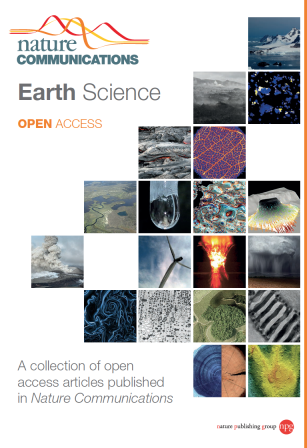SUERC paper on Martian CO2 sequestration features as part of Nature Communications Earth Science Collection
Published: 13 April 2015
2013 Paper (Tomkinson et al., 2013) from STFC project ‘Follow the Water’ led by SUERC selected for 2015 Nature Communications Earth Science Collection.

2013 Paper (Tomkinson et al., 2013) from STFC project ‘Follow the Water’ led by SUERC selected for 2015 Nature Communications Earth Science Collection.
Dr Darren Mark, project PI, led the STFC project ‘Follow the Water’ which aimed to identify solar system bodies that may provide suitable platforms for life. As water is central to the development and maintenance of life, understanding the history of water reservoirs on planets such as Mars and even on their satellites is an essential first step in knowing where in the solar system to explore.
The outcome of this research programme was a much better understanding of the times when water flowed through the Martian crust and where it came from (i.e. the surface of the planet, its interior or both). One of the project outputs has been highlighted as a ‘significance advance’ within its field.
“Sequestration of Martian CO2 by mineral carbonation”, published in Nature Communications in 2013, has been chosen to feature as part of a Nature Communications Earth science collection. The collection features a few select open access articles published in Nature Communications over the past two years that we feel represent great examples of significant advances in specialist fields and encapsulate the type of article Nature Communications is seeking to publish. The collection will be on display at the Nature booth at EGU next week (other conferences) and will form part of a special Nature publication.
Reference: Tomkinson, T., Lee, M.R., Mark, D.F., Smith, C.L. Sequestration of Martian CO2 by mineral carbonation (2013) Nature Communications, 4, art. no. 2662.
Abstract
Carbonation is the water-mediated replacement of silicate minerals, such as olivine, by carbonate, and is commonplace in the Earth’s crust. This reaction can remove significant quantities of CO2 from the atmosphere and store it over geological timescales. Here we present the first direct evidence for CO2 sequestration and storage on Mars by mineral carbonation. Electron beam imaging and analysis show that olivine and a plagioclase feldspar-rich mesostasis in the Lafayette meteorite have been replaced by carbonate. The susceptibility of olivine to replacement was enhanced by the presence of smectite veins along which CO2-rich fluids gained access to grain interiors. Lafayette was partially carbonated during the Amazonian, when liquid water was available intermittently and atmospheric CO2 concentrations were close to their present-day values. Earlier in Mars’ history, when the planet had a much thicker atmosphere and an active hydrosphere, carbonation is likely to have been an effective mechanism for sequestration of CO2.
See paper on Nature Communications.
First published: 13 April 2015
<< News

